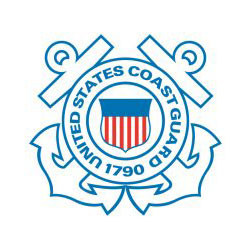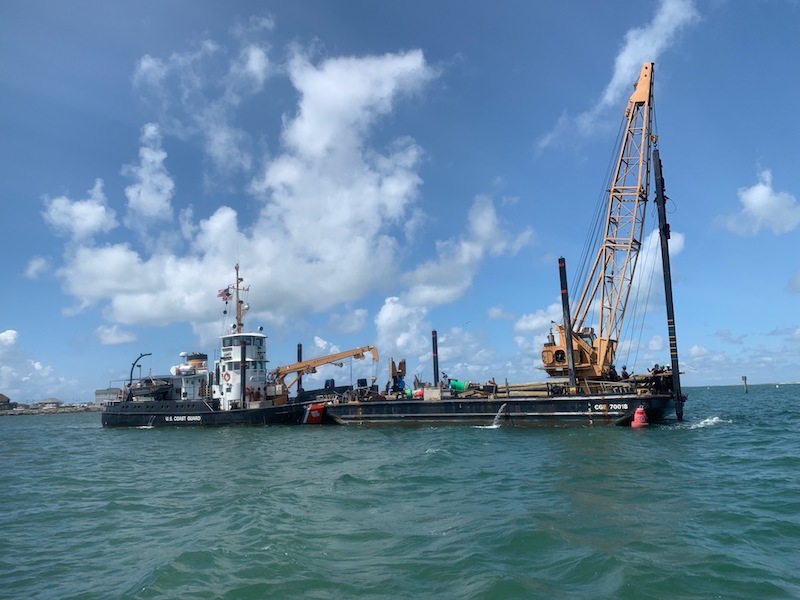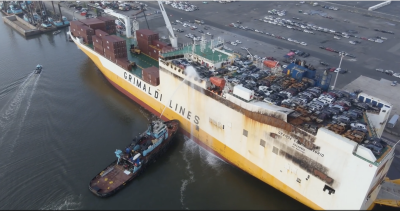When the U.S. Coast Guard Cutter Smilax (WLIC-315) was commissioned in 1944, allied forces had landed at Normandy five months earlier and had another 10 months of fighting ahead before victory in Europe and the Pacific would bring World War II to an end.
With nearly seven and half decades of water in her wake, the Smilax is the oldest Coast Guard cutter in service today. She turns 75 on Nov. 1.
The septuagenarian inland construction tender was enthroned as the Coast Guard “Queen of the Fleet” in 2011 when the Ketchikan, Alaska-based medium endurance cutter Acushnet (WMEC-167) was decommissioned after 67 years of service.
To mark her special status, Smilax displays a gold hull number instead of a white hull number like the rest of the aids to navigation (ATON) or “Black Hull” cutters. Smilax crewmembers wear a gold 315 insignia on their nametags.
The “Queen of the Fleet” program started in the 1970s and four cutters have sailed with the gold hull number since then: USCGC Fir (WLM-212), USCGC Storis (WMEC-38), USCGC Acushnet and now Smilax .
Since 1944, Smilax has helped mariners to get home safely by maintaining the buoys and beacons that enable them to avoid hazards and find the safest route. She services Aids to Navigation (ATON) from the Alligator River and Kitty Hawk Bay to Calabash Creek and the North Carolina/South Carolina state line.
Homeported in Atlantic Beach, N.C., Smilax tends the beacons and buoys that mark the waterways around the scenic shores of the North Carolina Outer Banks.
“Smilax maintains 1,300 fixed aids and 25 floating aids that guide mariners around the shallows and the shifting shoals of North Carolina,” said Chief Warrant Officer Jacob M. Carawan, the commanding officer of Smilax . “She maintains buoys in Oregon Inlet, Hatteras Inlet, Ocracoke Inlet and Beaufort Inlet.
“She tends the inlets, shoals and channels in between,” said Carawan, a 24-year military veteran.
Carawan said Smilax’s area of operations is busy during spring and summer with recreational boaters, sport fishermen, commercial fishing boats and deep draft vessels.
Smilax pushes a 70-foot barge with a crane that can lift up to 8.2 tons. The Smilax can also get underway without the barge and the crew can use her buoy deck crane to lift aids that weigh up to five tons.
With a cutter draft of 5 feet and barge draft of 2.6 feet, Smilax is able to maintain ATONs in shallow waterways that fluctuate from 24' water in the Pamlico Sound to shoals that can be walked on in other areas.
“The area of operations that we work is unique because most of the eastern North Carolina waterways are shallow and have perpetually shifting shoals,” said Carawan, who grew up in Swan Quarter, N.C., across the Pamlico Sound from Ocracoke Island in the Outer Banks. “Even the Coast Pilot (the National Oceanic and Atmospheric Administration’s navigation guide) doesn't recommend transiting the Outer Banks inlets without local knowledge.”
Built at the Dubuque Boat & Boiler Works in Dubuque, Iowa, for $194,238, Smilax has previously been homeported in Fort Pierce, Fla.; New Smyrna, Fla.; and Brunswick, Ga.
Along with maintaining buoys and beacons, the “Black Hull” cutter has proven her multi-mission mettle during her long and storied history, from search and rescue missions to a unique salvage operation.
While previously homeported in Florida, Smilax came to the aid of mariners on stranded and inoperable fishing vessels and yachts.
In 2013, Smilax crewmembers worked with divers from the North Carolina Department of Natural and Cultural Resources to salvage five cannons and multiple barrel hoops from the Queen Anne’s Revenge, the flagship for Edward Teach, the legendary pirate captain better known as Blackbeard. The ship ran aground in Beaufort Inlet, N.C., in 1718, and was discovered in 1996.
Weighing almost a ton each, the cannons that struck fear in the hearts of 18th century seafarers spent nearly 300 years on the seafloor before the Smilax crew hoisted them on to the cutter’s buoy deck.
Today, the cannons are stored with other pirate artifacts from the legendary ship in conservation tanks at the Queen Anne’s Revenge Lab on East Carolina University in Greenville, N.C.
Not only is the Smilax the oldest cutter in the Coast Guard but she is also part of the service’s oldest fleet. The 35 cutters from the inland fleet have average of 55 years of service.
The inland fleet is made up of Western Rivers tenders, inland buoy tenders and inland construction tenders that maintain ATONs on waterways across the nation.
Often the only federal presence on inland waterways, these cutters are a vital part of the 68-cutter “Black Hull” fleet that maintains the entire U.S. ATON system, the more than 48,000 beacons and buoys that save lives, protect property and enable commerce. In 2018, U.S. waterways supported $5.4 trillion in economic activity.
The Coast Guard charted the way ahead for its vital waterways missions in the Maritime Commerce Strategic Outlook. Recapitalizing aging assets, like the Coast Guard’s inland fleet, is among its objectives to make U.S. waterways safer, more efficient and more resilient.
According to Carawan, operating and maintaining a Coast Guard cutter that is more than half a century older than most of its crewmembers is a relentless but rewarding mission.
“Even the smallest repair can turn into a project,” said Carawan. “The facts are that she isn't an easy vessel and this isn’t an easy area of operations. You have to work to be on this crew – and it helps if you enjoy working.”
A career Coast Guard “Black Hull” sailor who spent the first two years of his career as a U.S. Army mortar man, Carawan served on four other ATON cutters, including the USCGC Kanawha (WLR-75407), USCGC Sledge (WLIC-75303), USCGC Cypress (WLB-210) and USCGC Aspen (WLB-208).
Carawan said serving as the commanding officer of the Smilax is a career highlight.
“I am back home in command of a ship, working ATON in my backyard on the ‘Queen of the Fleet,’” said Carawan. “To be a part of this crew on board this ship, every day is a highlight.”
“The crew is committed to this cutter and to each other,” said Carawan. “The crew is the ship.”




.png.small.400x400.png)
